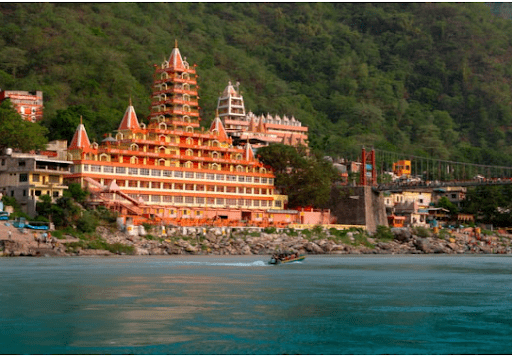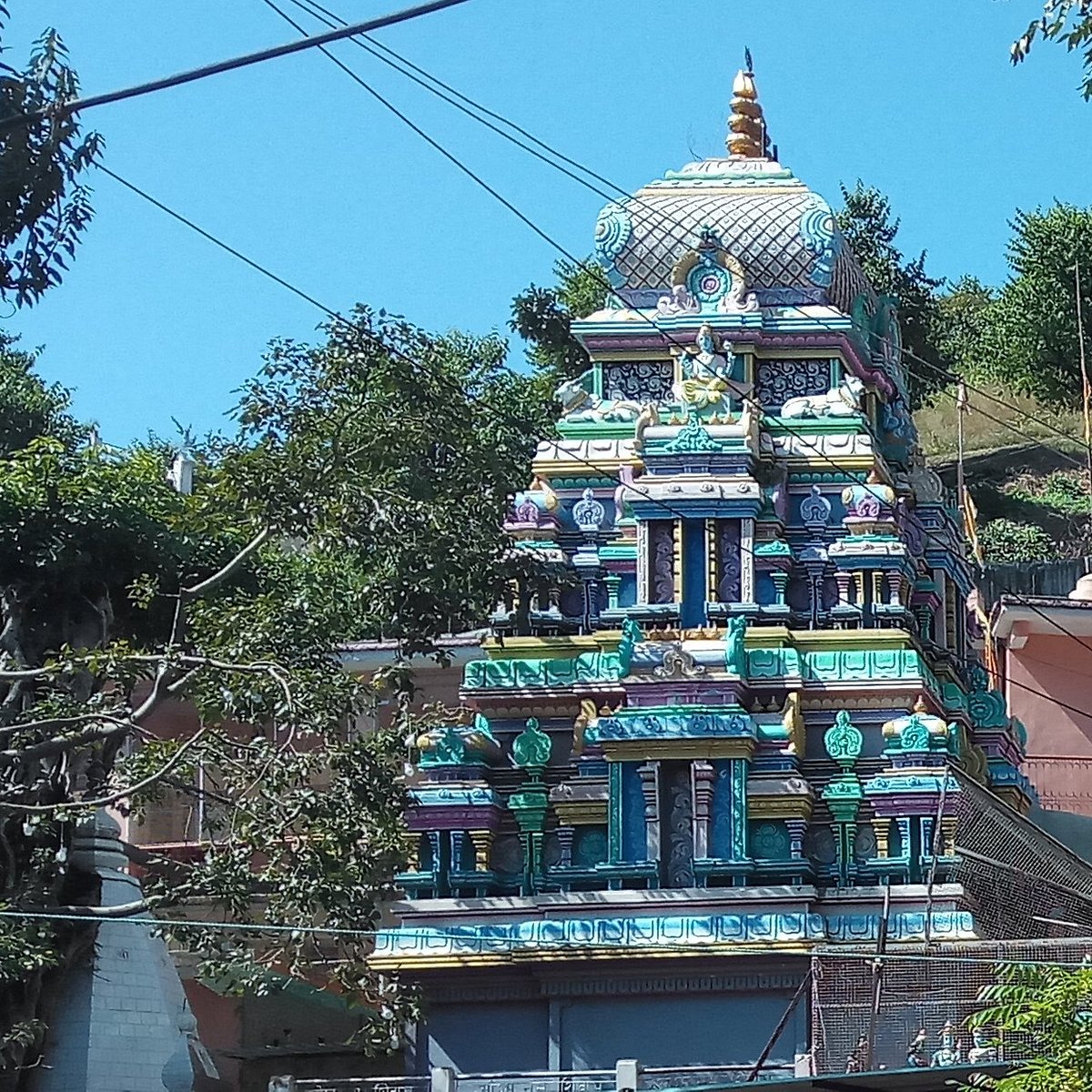
Neelkanth Mahadev Temple, Rishikesh, Uttarakhand
This temple situated near Rishikesh in the state of Uttarakhand, India, is a revered Hindu temple dedicated to Lord Shiva. Nestled amidst the lush greenery of the Garhwal Himalayas, this sacred site holds immense religious significance. The temple gets its name, “Neelkanth,” from the blue throat of Lord Shiva, a result of consuming the poison during the churning of the ocean as per Hindu mythology. Pilgrims and devotees embark on a challenging journey to reach Neelkanth Mahadev, set against a backdrop of majestic mountains and the flowing Ganges River. The temple is not only a testament to spiritual devotion but also a visual spectacle, showcasing intricate architectural details and carvings. The aura of Neelkanth Mahadev is heightened by the natural beauty surrounding it, creating a tranquil and divine atmosphere that attracts seekers of both religious solace and aesthetic delight.
Namaste 🙏 नमस्ते
Secure your visit • अपनी यात्रा सुरक्षित करें
Historical background and Architectural splendor
Rishikesh, situated in the state of Uttarakhand, has a rich historical background deeply intertwined with Hindu mythology. The town is mentioned in various ancient scriptures, including the Ramayana, where it is believed to be a sacred place associated with Lord Rama’s penance.
The architectural splendor of Rishikesh’s temples reflects a harmonious blend of traditional and modern influences. Temples like Triveni Ghat, Bharat Mandir, and Kunjapuri Devi Temple showcase intricate carvings, vibrant paintings, and sacred sculptures. Bharat Mandir, the oldest temple in Rishikesh, is believed to date back to the 8th century and boasts a unique blend of archaeological and architectural heritage.
One of the iconic structures is the Triveni Ghat, a revered bathing spot where the Ganges, Yamuna, and Saraswati rivers are said to converge. The Ghat’s architecture, adorned with artistic carvings and sculptures, serves as a visual testament to the town’s spiritual and cultural significance.
The Parmarth Niketan Ashram, though not a traditional temple, is a spiritual retreat that exemplifies architectural grace. Situated on the banks of the Ganges, it offers a tranquil environment for seekers of spiritual wisdom.

Religious Significance
One of the prominent temples in Rishikesh is the Triveni Ghat, a revered site along the banks of the holy Ganges River. The Triveni Ghat is not just a physical location but a symbol of religious significance and cultural importance. Pilgrims and devotees gather here for the divine experience of performing rituals, prayers, and the sacred Ganga Aarti. The confluence of the Ganges, Yamuna, and Saraswati rivers at Triveni Ghat is believed to cleanse the soul, and it is customary for visitors to take a dip in the holy waters. The spiritual ambiance, the echoing chants, and the mesmerizing aarti ceremony create an atmosphere that resonates with devotion and tranquility. Devotees believe that participating in the rituals at Triveni Ghat brings spiritual purification and blessings from the divine, making it a pivotal destination for those seeking a profound connection with their faith in the sacred town of Rishikesh.

Festival and Celebrations
Here the festivals celebrated are Ganga Dussehra, Mahashivratri, Diwali, Holi, Kunjapuri Devi Fair and Neelkanth Mahadev Fair. Rishikesh hosts the International Yoga Festival, held annually in March attracting yoga enthusiasts and practitioners from around the world. The festival includes yoga workshops, meditation sessions, spiritual discourses, and cultural performances.
Surroundings area & attractions
- Haridwar : A short distance from Rishikesh, Haridwar is a sacred city known for the Ganga Aarti at Har Ki Pauri, the Mansa Devi Temple, and the Chandi Devi Temple. It's a significant pilgrimage destination for Hindus.
- Neelkanth Mahadev Temple: Located about 32 kilometers from Rishikesh, this ancient temple dedicated to Lord Shiva is nestled amidst lush greenery and offers panoramic views of the surrounding hills.
- Triveni Ghat: A revered bathing ghat in Rishikesh, known for the daily Ganga Aarti and the confluence of the Ganges, Yamuna, and Saraswati rivers. Pilgrims gather here for spiritual rituals and prayers.
- Laxman Jhula and Ram Jhula: Iconic suspension bridges that span the Ganges, named after Lord Laxman and Lord Rama. The bridges offer stunning views of the river and the surrounding landscapes.
Visitor information
Entry Fee: No fee
Timings :
- 6:00 am – 9:00 pm
Darshan Days- All days
Address:
Neelkanth Mahadev Temple Rishikesh TapKotdwar - Pauri Rd, Kotdwaraovan, Rishikesh, Uttarakhand, 249149, India
Notable Events and Incidents
- Temple Inauguration (1939)
- Attack on Temple (1966)
- Participation in Swachh Bharat Abhiyan
Connectivity :
- Road: Neelkanth Mahadev is accessible by road, and you can reach the temple by hiring a taxi, taking a private vehicle, or using public transportation from Rishikesh.
- Rail: The nearest railway station is Rishikesh Railway Station. From there, you can hire a taxi or take a local bus to reach Neelkanth Mahadev.
- Air: The nearest airport is Jolly Grant Airport in Dehradun, which is approximately 35 kilometers from Rishikesh.
FAQ
The Neelkanth Mahadev Temple is dedicated to Lord Shiva and is revered as one of the most sacred temples in India. It is situated amidst the picturesque backdrop of the Himalayas and holds immense religious significance for devotees.
The temple is located near the village of Rishikesh in the state of Uttarakhand, India. It is situated at a height of around 1330 meters (4360 feet) above sea level in the Pauri Garhwal district of Uttarakhand.
According to Hindu mythology, the temple stands at the spot where Lord Shiva consumed the poison (halahala) that emerged from the churning of the ocean (Samudra Manthan) by gods and demons. This act turned his throat blue (neelkanth), hence the name Neelkanth Mahadev.
The temple exhibits traditional North Indian architecture with intricate carvings and sculptures. It features a pyramid-shaped spire (shikhara) adorned with sculptures of various Hindu deities.
The temple is usually open from early morning to late evening. However, the timings may vary depending on the season and special occasions.
While there isn’t a strict dress code enforced, visitors are advised to dress modestly and respectfully.
The temple celebrates the Maha Shivaratri festival with great fervor. It is a major annual festival during which devotees throng to the temple to offer prayers and seek blessings from Lord Shiva.
The temple is situated about 32 kilometers from Rishikesh. Visitors can reach the temple by road via taxis, buses, or private vehicles. The route to the temple passes through scenic landscapes and offers breathtaking views of the surrounding mountains.
Photography is generally allowed in the temple premises, but it’s advisable to respect the sanctity of the temple and avoid photography in areas where it may disturb worshippers or disrupt rituals.
Yes, Rishikesh is a popular destination for spiritual seekers and adventure enthusiasts alike. Visitors can explore other attractions such as the Ganga Aarti at Triveni Ghat, the Beatles Ashram, Ram Jhula, and Laxman Jhula, among others.
Yes, there are trekking trails that lead to the temple from various starting points. One of the most popular routes is from the village of Pauri Garhwal, which takes approximately 6-7 hours to complete. The trek offers breathtaking views of the Himalayan landscape.
Yes, the temple complex offers basic facilities such as restrooms, drinking water,small shops selling prasad (offerings) and religious items.
Yes, there are also designated areas for meditation and relaxation within the temple premises.
The temple priests perform regular rituals such as Abhishekam (ritual bathing of the deity), Archana (offering prayers), and Aarti (worship with lamps) to Lord Shiva.
Yes, there are natural water springs and streams near the temple that are considered holy by devotees. It is believed that taking a dip in these sacred waters purifies the soul and bestows blessings from Lord Shiva.
Yes, the tranquil environment surrounding the temple makes it an ideal place for meditation and yoga practices in amidst the natural beauty of the Himalayas.
The temple and the terrain may pose challenges for people with mobility impairments. However, efforts are being made to improve accessibility, and there may be some facilities available for differently-abled visitors.
According to local legends, the area around the temple is believed to be the place where Lord Shiva consumed the poison that emerged from the churning of the ocean. It is also believed to be the spot where Lord Shiva meditated after consuming the poison, earning it the name Neelkanth (blue-throated) Mahadev.
Yes, the temple remains open for devotees throughout the year.
Yes, the region around the temple is known for its rich biodiversity and offers opportunities for birdwatching and nature walks.
